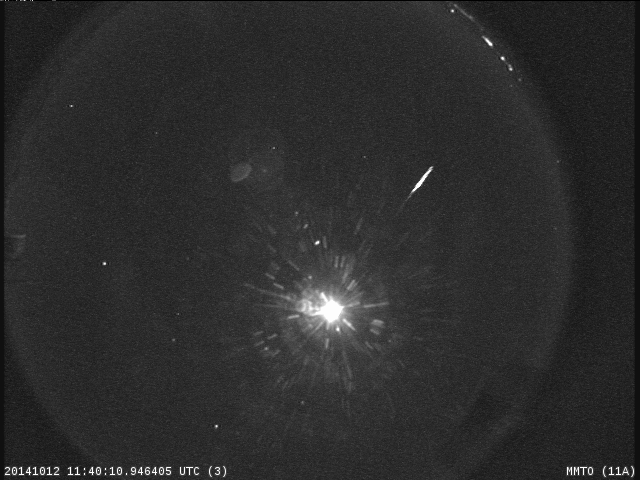Orionid meteors appear every year around this time when Earth orbits through an area of space littered with debris from the ancient comet. Normally, the shower produces 20 or so meteors per hour.
“Earth is passing through a stream of debris from Halley’s Comet, the source of the Orionids,” says Bill Cooke of NASA’s Meteoroid Environment Office. “Bits of comet dust hitting the atmosphere should give us a couple dozen of meteors per hour.”
The best time to look for Orionid meteors is just before sunrise on Tuesday, Oct. 21st, that’s when Earth encounters the densest part of Halley’s debris stream. Observing is easy: Wake up a few hours before dawn, go outside and look up. No telescope is necessary to see Orionids shooting across the sky. Viewing conditions are favorable this year, as the light from the slim crescent Moon will not wash out many Orionid meteors.
A live broadcast of the Orionid meteor shower will be available via Ustream beginning October 20, at 10 p.m. EDT. The live feed is an alternative for stargazers experiencing bad weather or light-polluted night skies.
The display will be framed by some of the prettiest stars in the night sky. In addition to Orionids, you’ll see the Dog Star Sirius, bright winter constellations such as Orion, Gemini and Taurus, and the planet Jupiter. Even if the shower is a dud, the rest of the sky is dynamite.
Set your alarm, brew some hot chocolate and enjoy the show!



























